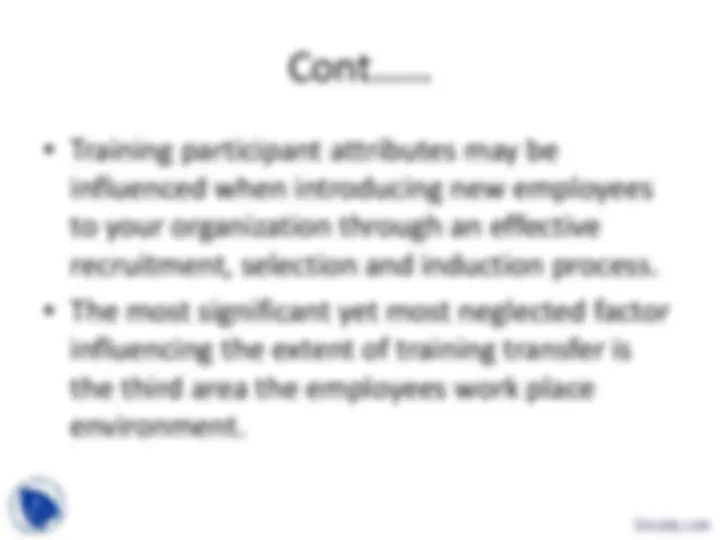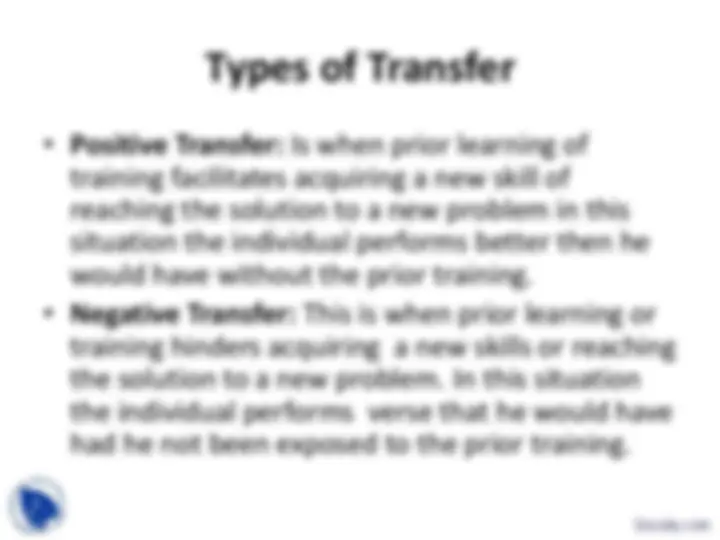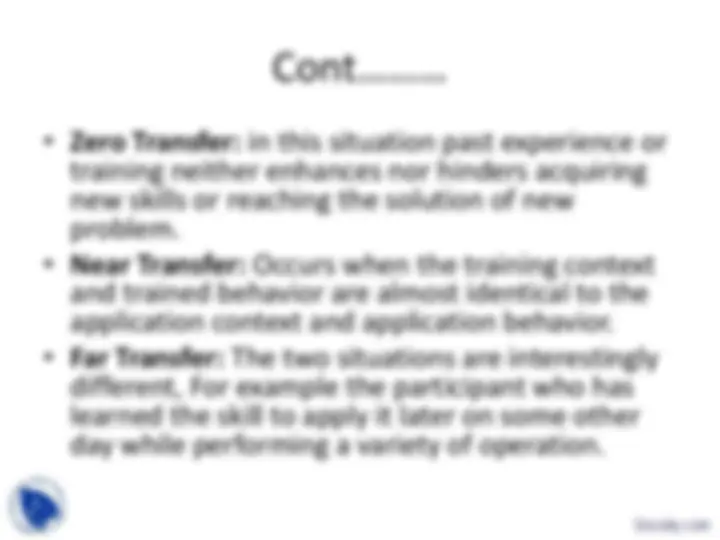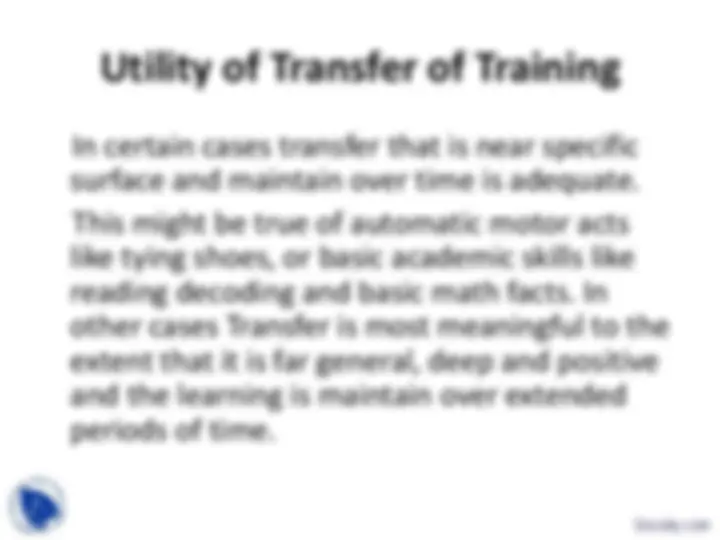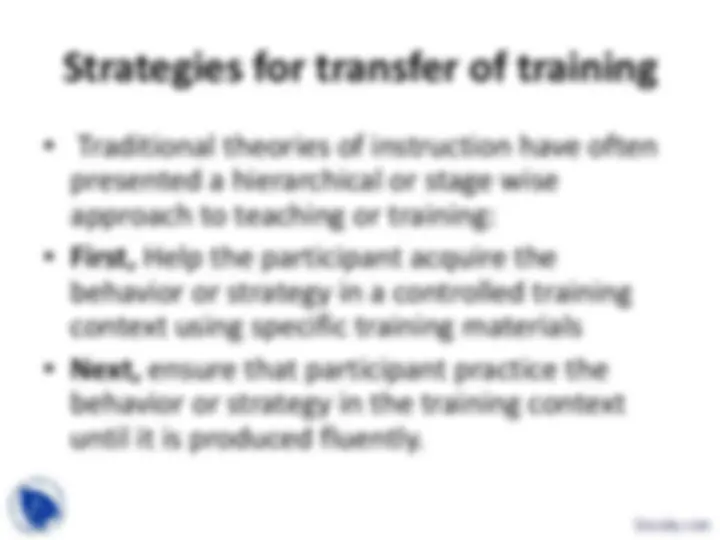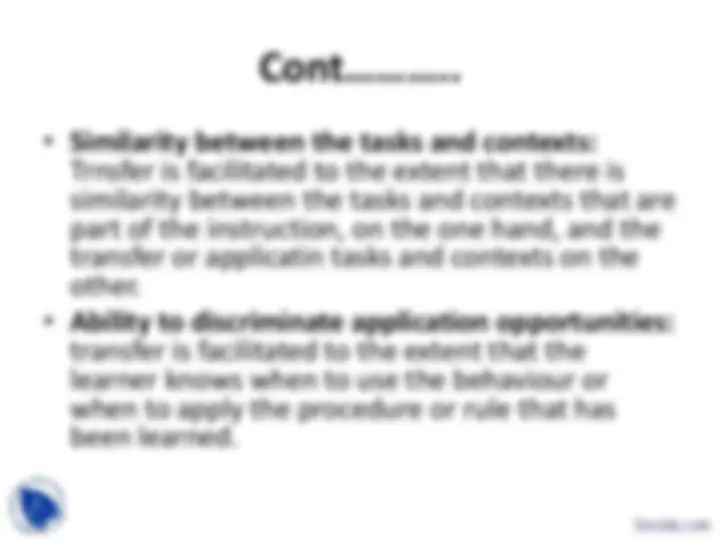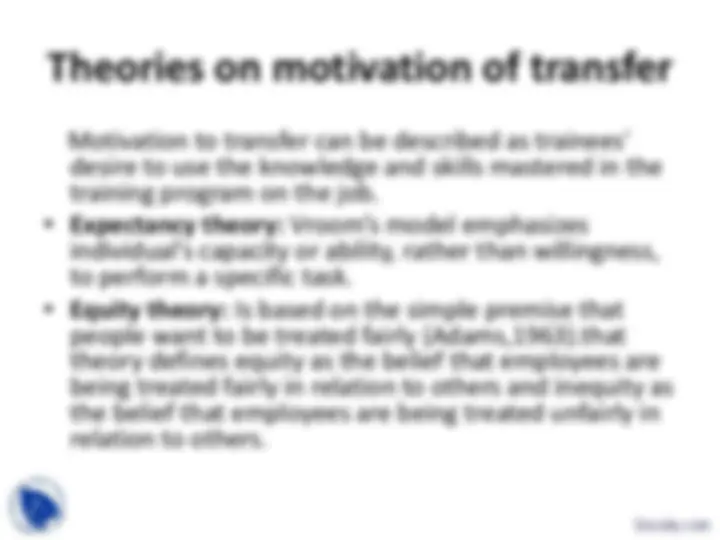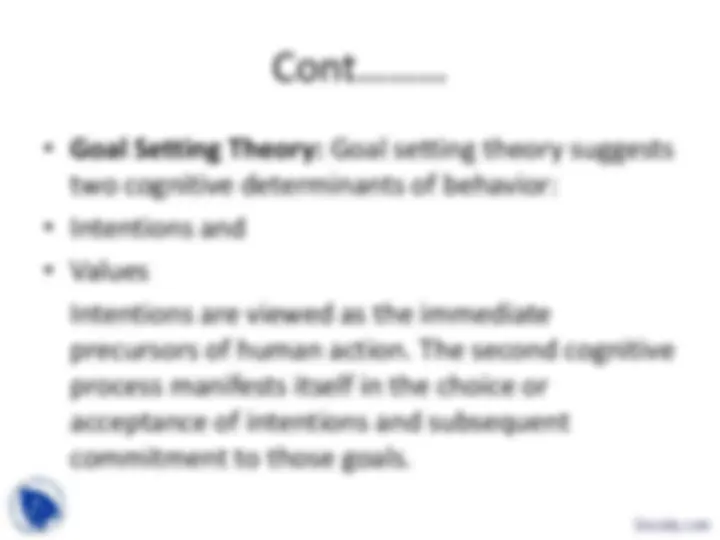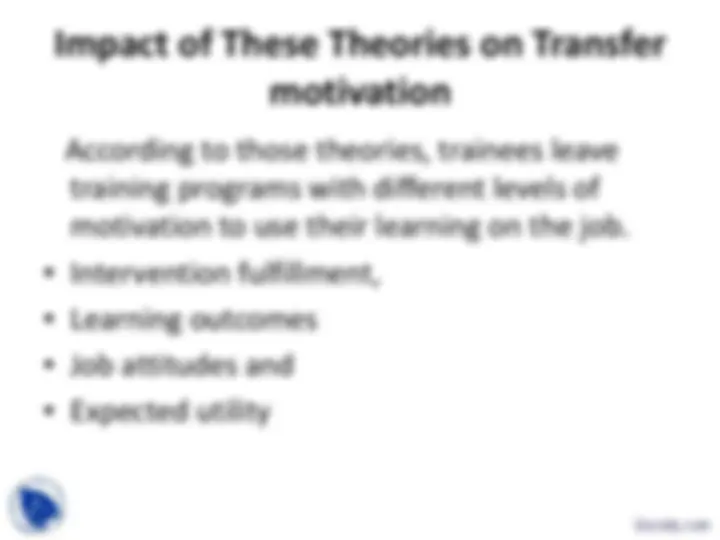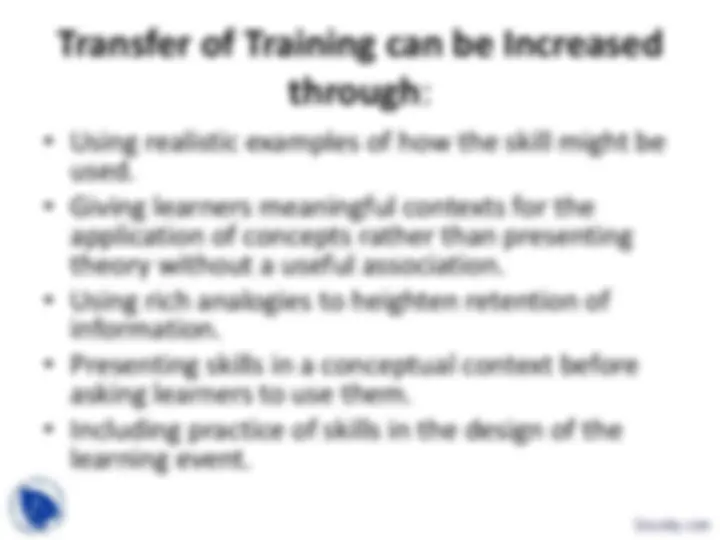Download Transfer of Training-Training and Development-Lecture Slides and more Slides Training and Development in PDF only on Docsity!
Transfer of Training
Transfer of training is the ability by virtue of which a trainee can utilize the newly acquired knowledge, skill and attitude, learnt during the training, while performing on the real job site. Transfer of training refers to the extent to which a learned/ acquired behavior during the training will be reproduce exactly in a new location at the real site of job, or how a learned skill or principle will be applied in a new situation by the trainee.
Utilization of Training At Workplace
For any given training program, you will need to look into three areas:
- Training participant attributes (intelligence, attitudes).
- Training program design and delivery.
- Workplace environment.
Types of Transfer
- Positive Transfer: Is when prior learning of training facilitates acquiring a new skill of reaching the solution to a new problem in this situation the individual performs better then he would have without the prior training.
- Negative Transfer: This is when prior learning or training hinders acquiring a new skills or reaching the solution to a new problem. In this situation the individual performs verse that he would have had he not been exposed to the prior training.
Cont………
- Zero Transfer: in this situation past experience or training neither enhances nor hinders acquiring new skills or reaching the solution of new problem.
- Near Transfer: Occurs when the training context and trained behavior are almost identical to the application context and application behavior.
- Far Transfer: The two situations are interestingly different, For example the participant who has learned the skill to apply it later on some other day while performing a variety of operation.
Cont…….
- Surface Transfer: The learner transfers learning to a similar set of circumstances.
- Deep Transfer: The learner might transfer that learning to an airplane dashboard that looks very different.
Utility of Transfer of Training
In certain cases transfer that is near specific surface and maintain over time is adequate.
This might be true of automatic motor acts like tying shoes, or basic academic skills like reading decoding and basic math facts. In other cases Transfer is most meaningful to the extent that it is far general, deep and positive and the learning is maintain over extended periods of time.
Cont………..
- Similarity between the tasks and contexts: Trnsfer is facilitated to the extent that there is similarity between the tasks and contexts that are part of the instruction, on the one hand, and the transfer or applicatin tasks and contexts on the other.
- Ability to discriminate application opportunities: transfer is facilitated to the extent that the learner knows when to use the behaviour or when to apply the procedure or rule that has been learned.
Cont……….
- Task organization: transfer is facilitated to the extent that the instructional tasks are organized as much as possible like the application tasks.
- Motivation transfer: transfer is facilitated to the extent that learner know that it is important to transfer what they have learned.
Theories on motivation of transfer
Motivation to transfer can be described as trainees' desire to use the knowledge and skills mastered in the training program on the job.
- Expectancy theory: Vroom’s model emphasizes individual's capacity or ability, rather than willingness, to perform a specific task.
- Equity theory: Is based on the simple premise that people want to be treated fairly (Adams,1963).that theory defines equity as the belief that employees are being treated fairly in relation to others and inequity as the belief that employees are being treated unfairly in relation to others.
Cont………
- Goal Setting Theory: Goal setting theory suggests two cognitive determinants of behavior:
- Intentions and
- Values
Intentions are viewed as the immediate precursors of human action. The second cognitive process manifests itself in the choice or acceptance of intentions and subsequent commitment to those goals.
Definition And Illustration of Transfer
climate items
- Goal Cues: These cues serve to remind trainees to use their training when they return to their jobs: for example, existing managers self goals for new managers that encourage them to apply their training on the job.
- Social cues: these cues arise from group membership and include the behavior and influence process exhibited by supervisor, peers, and subordinates.
Cont……….
- Task cues: these cues are concerned with the design and nature of the job itself; for example, equipment is available that allows new managers to use the skills they gained in training.
- Self-control cues: these cues refer to various self- control processes that permit trainees to use what they have learned; for example, I was allowed to practice handling real and job-relevant problems.
Management Role to Ensure Transfer
of training
Training is a powerful improvement technique that offers tremendous benefits when its’ judiciously used. Let us discuss management’s role in supporting the many factors that influence how well people transfer to their jobs any training they receive. Management’s support is essential to assuring the long-term return on any training investment.
Transfer of Training can be Increased
through :
- Using realistic examples of how the skill might be used.
- Giving learners meaningful contexts for the application of concepts rather than presenting theory without a useful association.
- Using rich analogies to heighten retention of information.
- Presenting skills in a conceptual context before asking learners to use them.
- Including practice of skills in the design of the learning event.

